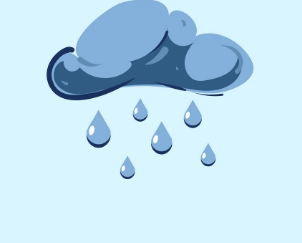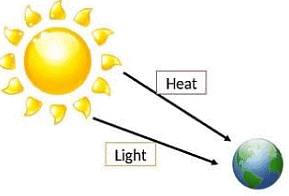Sky Above Us - 2 Class 1 Worksheet Science
Q1: Multiple Choice Questions (MCQs)
(i) What is the color of the sky on a sunny day?
(a) Red
(b) Green
(c) Blue
(d) Yellow
Ans: (c)
On a sunny day, the sky is (c) blue because sunlight scatters in the atmosphere, making the sky appear blue. (ii) The sun gives us ______ and ______.
(ii) The sun gives us ______ and ______.
(a) Light and water
(b) Heat and food
(c) Toys and books
(d) Cars and bikes
Ans: (b)
The sun provides (b) heat and food by warming Earth and enabling plant growth for our sustenance.
(iii) What do we see in the sky at night that twinkles?
(a) Moon
(b) Sun
(c) Clouds
(d) Birds
Ans: (a)
At night, we see the (a) moon in the sky, which appears to twinkle due to its light passing through the Earth's atmosphere.
(iv) Clouds are made up of tiny water ______.
(a) Rocks
(b) Leaves
(c) Drops
(d) Toys
Ans: (c)
Clouds consist of tiny water (c) drops that form when water vapor condenses in the atmosphere. (v) Which one comes out during the daytime?
(v) Which one comes out during the daytime?
(a) Moon
(b) Stars
(c) Sun
(d) Owls
Ans: (c)
The (c) sun appears in the daytime, providing light and warmth, while the moon and stars are visible at night.
Q2: True or False
(i) The sky is above us.
(ii) Stars twinkle at night.
(iii) Clouds are fluffy and light.
(iv) The sun gives us heat and light.
(v) The moon comes out during the daytime.
Ans:
(i) The sky is above us. True
(ii) Stars twinkle at night. True
(iii) Clouds are fluffy and light. True
(iv) The sun gives us heat and light. True
(v) The moon comes out during the daytime. False
Q3: Fill in the Blanks
(i) The sky is blue on a ______ day.
(ii) The sun gives us heat and ______.
(iii) Clouds are made up of tiny water ______.
(iv) Stars ______ in the night sky.
(v) We see the moon and ______ in the night sky.
Ans:
(i) sunny
(ii) light
(iii) drops
(iv) twinkle
(v) stars
Q4: Rearrange the letters to form words.
(i) stasr
(ii) dyasitme
(iii) oudlcs
(iv) nimo
(v) nhusi
Ans:
(i) stars
(ii) daytime
(iii) clouds
(iv) moon
(v) sun
Q5: Answer the Following
(i) What does the sun give us?
Ans: The sun gives us heat and light.

(ii) Why does the sky look blue during the day?
Ans: The sky looks blue during the day because of the scattering of sunlight by tiny particles in the air.
(iii) Why do stars twinkle at night?
Ans: Stars twinkle at night because their light has to pass through the Earth's atmosphere which can cause the light to flicker slightly.
(iv) What are clouds made of?
Ans: Clouds are made of tiny water drops that have gathered together in the air.
(v) Can we see the moon during the daytime? Why or why not?
Ans: We usually don't see the moon during the daytime because the bright sunlight makes the moon's light less visible.
FAQs on Sky Above Us - 2 Class 1 Worksheet Science
| 1. What is the sky above us? |  |
| 2. How does the sky above us change throughout the day? |  |
| 3. Why does the color of the sky above us change during sunrise and sunset? |  |
| 4. Can we see the sky above us in outer space? |  |
| 5. How does the sky above us affect weather conditions on Earth? |  |




















